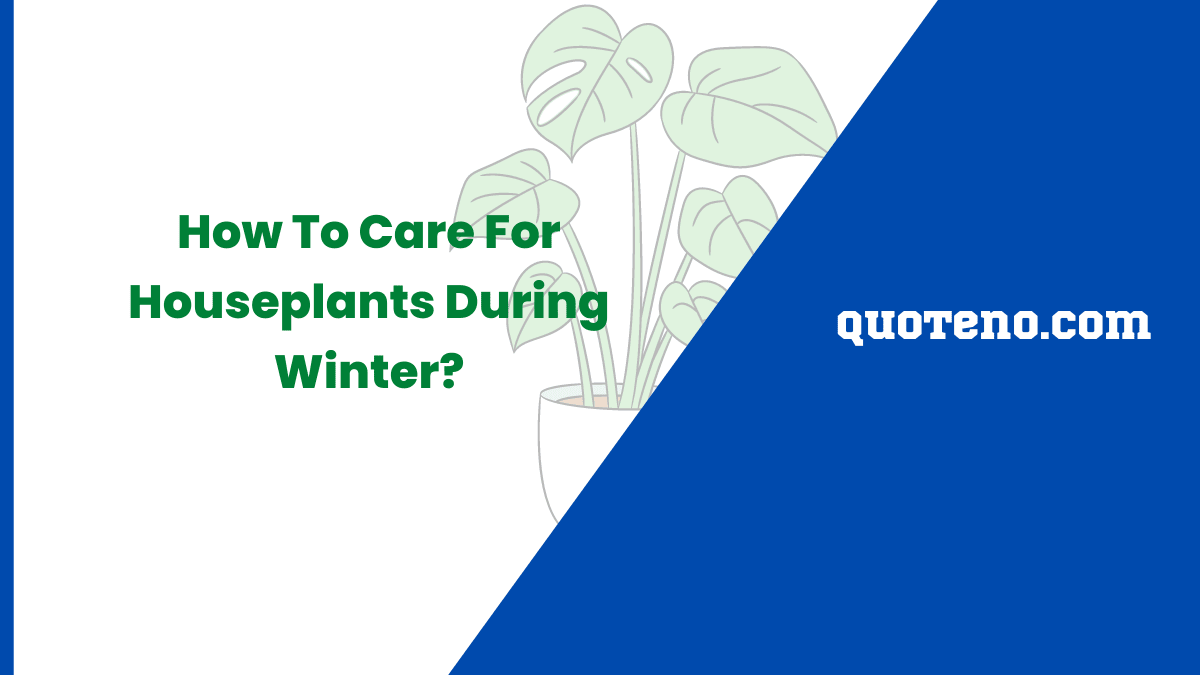Houseplants are a great way to bring life and beauty to any living space, but caring for them during the winter months can be a challenge. With less natural light, dry indoor air, and colder temperatures, giving some extra attention and care is important for keeping plants alive in winter.
In this blog, we’ll share some helpful tips on how to care for plants in winter so that you can enjoy their beauty all year round. Whether you’re a seasoned plant parent or just starting out, these tips will help you keep your houseplants looking better than the flower arrangements online through the winter months.
Table of Contents
1. Adjust The Watering Frequency
It’s important to adjust your frequency of watering plants in winter so that your plants can stay healthy. This is because the amount of water your plants need depends on a lot of different factors, including things like the type of soil, plant size, species, and how much sunlight they receive.
The temperature at your site is also an important factor to consider because it can affect how often you need water. Typically, plants need more frequent watering during warm weather because the soil will dry out more quickly.
If you’re unsure whether it’s time to water your winter houseplants, look for signs that they’re starting to wilt, such as when the top inch of soil becomes dry or they stop growing new leaves. This is a good indication that they’re ready for another watering.
2. Increase Humidity
If your houseplants are suffering from browning leaf tips, curled leaves, or wilting, they may need to be increased in humidity. This is particularly true during winter when cold air sucking up moisture causes plants to lose water quicker than you’re watering plants in winter.
Using a humidifier is an easy way to increase the humidity of your houseplants. These devices work by releasing moisture into the air and then slowly evaporating it to raise the humidity in the room.
In winter, indoor plants can be strategically placed in areas with high humidity, such as the bathroom or kitchen. The wet environment from a shower, bathtub, or sink is beneficial to your plants, and the steam from cooking food can help increase humidity as well.
3. Adjust Lighting
Winter’s shorter days and dreary skies make keeping plants alive in winter hard. To keep your indoor garden looking spiffy, adjust your lighting routines accordingly. Whether it’s a new grow light or a simple change of scenery, consider moving plants around the house to get the best possible exposure to sunlit air.
It’s no secret that some houseplants do better in warmer climates. For example, African violets are at their happiest when they’re basking in the warm sun of southern Florida or balmy Mediterranean temperatures. The same is true for most tropical species. Likewise, tropicals aren’t the only ones that thrive in cool weather – cacti and succulents will also do well during these times of ill health. To keep them happy, avoid putting them in close proximity to cold drafts or heat sources.
4. Monitor Temperature
During winter, indoor plants can become stressed because of temperature fluctuations. This is especially true if they are placed near cold drafts, heat vents, or radiators.
The ideal temperature for most houseplants is 65 to 75 degrees Fahrenheit during the day, with 10 to 15 degrees cooler at night. Dramatic fluctuations can kill plants, so make sure yours aren’t placed in a location where they’ll be subject to extreme swings.
One way to monitor temperature is with a digital thermometer. The best models can give you the ability to monitor several different areas simultaneously. These devices can also alert you via email, text, or phone calls whenever their preset temperatures are reached.
5. Keep An Eye Out For Pests
Keeping an eye out for pests is important in any household, but especially so during the winter. As temperatures drop, pests like rodents and cockroaches start to look for a warm place to call home. But it doesn’t have to be that way! You can keep your winter houseplants safe from pests by following a few simple steps. Learn more about how to identify the pests that are causing problems for your plant and how to get rid of them!
First, if you suspect that your plant has pests, inspect it carefully for signs of infestation. In winter, indoor plants with sticky leaves, yellow spots, and chomp marks are all common signs of insects that are attacking your plants. Another good place to look is in the soil. If you see tiny worm-like creatures or fungus gnats, they are likely a sign that your plant is infested with a pest.
Conclusion
In conclusion, keeping plants alive in winter can be challenging, but with some simple adjustments and extra attention, you can ensure their health and happiness. Adjusting the frequency of watering plants in winter, increasing humidity, keeping them away from drafts, providing extra light, and keeping an eye out for pests are all important steps in caring for your houseplants during the winter months.
By learning how to care for plants in winter, you can help your plants survive the colder, drier months and keep them looking their best all year round. With a little bit of care and attention, your winter houseplants will thrive and continue to bring life and beauty to your home.

